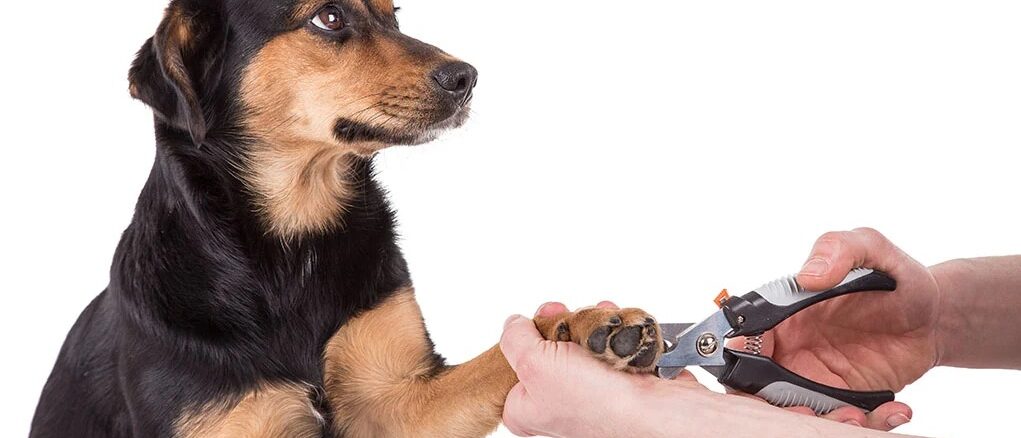Trimming your pet’s nails doesn’t have to be a wrestling match or a scary experience. With the right approach, it can become a calm, positive bonding time. This guide will help you understand how to trim your dog or cat’s nails safely, confidently, and without the drama—step by step.
-
Why Is Nail Trimming Important?
Before we get into the steps, it’s important to know why nail trimming matters. Overgrown nails can:
- Cause pain while walking
- Lead to joint and posture issues
- Get snagged or torn, causing bleeding or injury
- Curl into the paw pad, especially in cats or small dogs
Regular nail trimming keeps your pet comfortable, healthy, and happy.
-
Step 1: Get the Right Tools
Start with the proper equipment:
- Pet nail clippers: Scissor-style or guillotine-style, depending on your comfort.
- Nail grinder (optional): A tool that files down the nail gradually, good for smooth edges.
- Styptic powder or pencil: To stop bleeding quickly in case you accidentally cut too far.
- Treats: Very important! These help make it a positive experience.
Make sure the tools are clean and sharp. Dull clippers can crush the nail instead of cutting cleanly, causing pain.
-
Step 2: Make It a Positive Experience
Pets often fear nail trimming because of past bad experiences or unfamiliarity. Let’s fix that:
- Start by handling their paws gently every day, even without trimming.
- Tap their nails with the clipper or grinder so they get used to the feel.
- Give praise and treats each time they let you touch their paws.
This step helps your pet understand that paw handling means good things.
-
Step 3: Pick a Calm Time and Place
Choose a quiet, well-lit spot with minimal distractions. A room with natural light or a lamp near you helps you see the nails better.
Pick a time when your pet is tired and relaxed—like after a walk or play session. A tired pet is less likely to resist.
-
Step 4: Learn the Anatomy of the Nail
Step 4: Learn the Anatomy of the Nail
- In light-colored nails, you can usually see a pink area inside the nail. This is the quick, which contains nerves and blood vessels. Never cut into it.
- In dark nails, the quick isn’t visible. Trim only the curved part of the nail—just a little at a time until you see a grey or white circle in the center of the cut nail.
If you’re unsure, it’s better to trim a small amount often rather than too much at once.
-
Step 5: Trim With Confidence
Once your pet is calm and you’re set up:
- Hold the paw gently but firmly.
- Clip only the tip of the nail, avoiding the quick.
- If using a grinder, gently file the nail down slowly in short bursts.
- If your pet pulls away, don’t yank—let them settle and try again.
- Speak softly and reward after each nail or paw trimmed.
Go slowly and don’t try to finish all four paws if your pet is anxious. You can continue the next day.
-
Step 6: Watch for Bleeding – Stay Calm
If you accidentally cut into the quick:
- Don’t panic. It may bleed but usually stops in a few minutes.
- Apply styptic powder or gently press a clean cotton ball to the nail.
- Stay calm so your pet doesn’t pick up your stress.
To avoid this, always trim just the pointed tip of the nail.
-
Step 7: File the Edges (Optional)
If the nails feel sharp after clipping, you can use a nail file or grinder to smooth the edges. This helps prevent scratching when your pet jumps or plays with you.
-
Step 8: Make It a Routine
Regular trimming helps your pet get used to the process and prevents nails from growing too long. Generally:
- Every 2–4 weeks is ideal for most dogs and cats.
- If you hear nails clicking on the floor, it’s time for a trim.
- Outdoor dogs may naturally wear nails down more than indoor ones.
Making it a part of your pet’s grooming routine helps avoid future drama.
-
Extra Tips for a Stress-Free Trim
- Use two people: One to hold and comfort the pet, one to trim.
- Wrap cats or small dogs in a towel like a burrito, exposing one paw at a time.
- Play calming music or use pheromone sprays for anxious pets.
- Praise and treat after every success, even small ones.
-
When to Ask for Help
If trimming is too stressful or if your pet growls, bites, or panics:
- Don’t force it. Stop and try another day.
- Consider visiting a groomer or vet clinic for professional nail trimming.
- You can also ask them to teach you how to do it confidently at home.
-
Final Words
Nail trimming doesn’t have to be a dreaded task. With patience, the right tools, and positive reinforcement, you can make it a quick, calm, and rewarding experience for both you and your pet.
Think of it as a bonding time—a little love and care that helps keep your furry friend healthy and happy.
Share This Post

